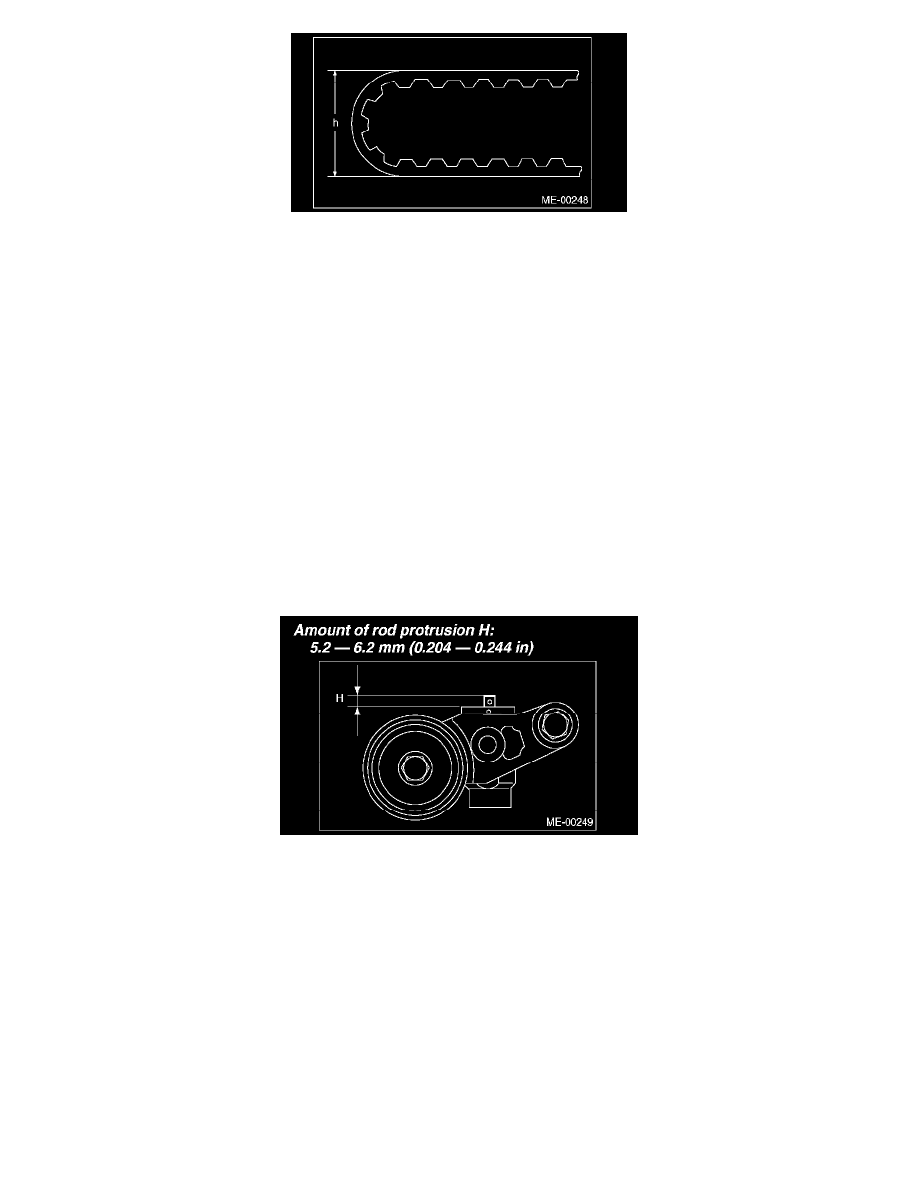Outback F4-2.5L (2008)

AUTOMATIC BELT TENSION ADJUSTER
1) Visually check the oil seals for leaks, and rod ends for abnormal wear and scratches. If necessary, replace the automatic belt tension adjuster
assembly.
NOTE: Slight traces of oil at rod's oil seal does not indicate a problem.
2) Check that the adjuster rod does not move when a pressure of 165 N (16.8 kgf, 37.1 lb) is applied to it. This is to check adjuster rod stiffness.
3) If the adjuster rod is not stiff and moves freely when applying 165 N (16.8 kgf, 37.1 lb), check it using the following procedures:
1) Slowly press the adjuster rod down to the end surface of cylinder. Repeat this operation two to three times.
2) With the adjuster rod moved all the way up, apply a pressure of 165 N (16.8 kgf, 37.1 lb) to it. Check the adjuster rod stiffness.
3) If the adjuster rod is not stiff and moves down, replace the automatic belt tension adjuster assembly with a new part.
CAUTION:
^
Always use a vertical type pressing tool to move the adjuster rod down.
^
Do not use a lateral type vise.
^
Push the adjuster rod vertically.
^
Press the adjuster rod gradually taking three minutes or more.
^
Do not allow press pressure to exceed 9,807 N (1,000 kgf, 2,205 lb).
^
Push in the adjuster rod to the end face of the cylinder. However, do not push in the adjuster rod below the end face of the cylinder.
Doing so may damage the cylinder.
4) Measure the amount of rod protrusion "H" from the end surface of the body. If it is not within specified range, replace with new part.
BELT TENSION PULLEY
1) Check the mating surfaces of timing belt and contact point of adjuster rod for abnormal wear or scratches. Replace the automatic belt tension
adjuster assembly if faulty.
2) Check the belt tension pulley for smooth rotation. Replace if noise or excessive play occurs.
3) Check the belt tension pulley for grease leakage.
BELT IDLER
1) Check the belt idler for smooth rotation. Replace if noise or excessive play occurs.
2) Check the outer contacting surfaces of idler pulley for abnormal wear and scratches.
3) Check the belt idler for grease leakage.
